Dog training isn’t just for show dogs, service dogs, and military dogs. It’s a way of life that should be ongoing between a dog and its human. It sets the dog, the human, and all they encounter up for success. Dog training commands, therefore, are important to understand and use correctly if your dog is going to benefit and demonstrate reliable behavior.
But where does a new dog owner start?
Getting Started with Dog Training Commands
What if you have just brought a puppy into your family or you have a dog with a laundry list of undesirable behaviors?
Is there such a thing as “disobedience training” to undo the bad stuff?
What if you’ve rescued a dog and have no idea what her history is? How do you figure out what she knows and doesn’t know?
And what about those cute dog tricks you see people do with their dogs when guests come over for dinner?
Sure, your little Fluffy isn’t going to sniff bombs in a war zone. But it’s still important to master basic dog training techniques and continue to build on them for the duration of her life.
And, believe it or not, a lot of the training principles and dog training commands – or “cues,” as trainers prefer – are universal.
Some breeds (e.g. Belgian Malinois) are a more natural fit for the rigors of military training. And some (e.g. Labrador Retrievers) seem to be born service and therapy dogs.
But their training starts the same way: not with dog training commands, but with building rapport.
It is, after all, the relationship between a dog and its handler or owner that sets the tone for the training and its ultimate success.
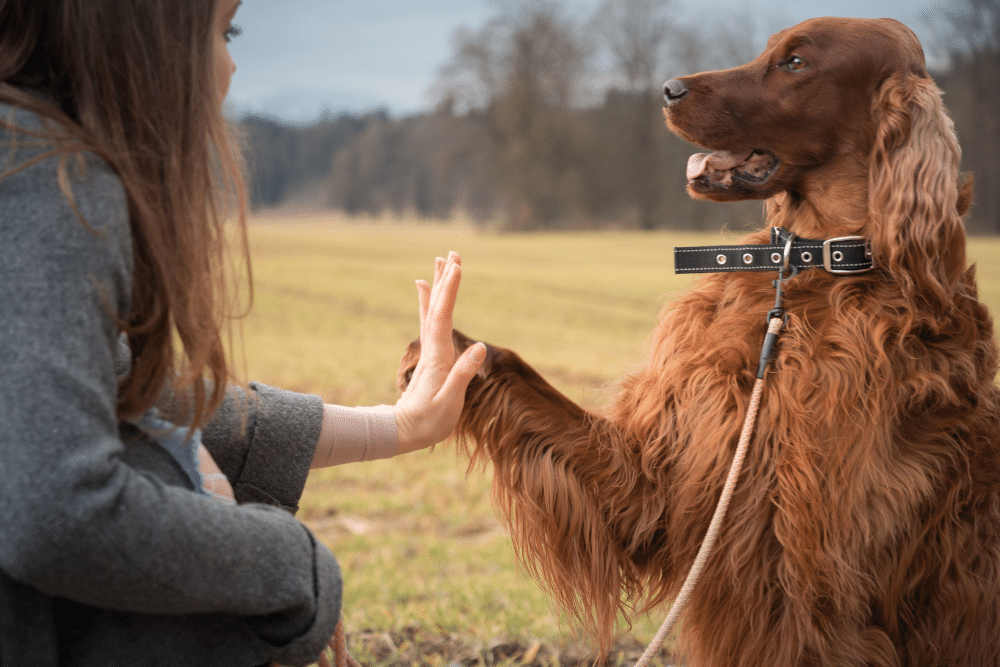
Dog Training Techniques
You want your dog to want to please you, not because she fears you, but because she trusts, respects, and loves you.
And, long before there is roll over, play dead, or Westminster, there are basics like sit, stay, and potty training.
In the positive reinforcement training method, attention and reward are given in response to desired behaviors.
In the beginning, those behaviors are learned largely by “doing.” The owner or trainer acknowledges (e.g. with a clicker), names, and rewards the behavior, often using high-value training treats for important behaviors.
As the dog learns the commands, the owner or trainer can simply call or signal the cues, then reinforce with anything from praise to play to treats.
Top 12 Dog Training Commands
So what are the top 12 dog training commands that every dog (and its human) need to master as a foundation for higher learning?
1. Watch.
Watch is your attention-getting command. If your dog’s not paying attention to you, all other attempts at communication will be futile.
2. Watch me.
This command takes watch one step further and communicates to your dog that you want eye contact. It’s an important step to giving your dog further direction.
This visual connection between dog and human is an important component of loose-leash walking.
It can also be a good way to distract your dog from potential triggers like other dogs or loud noises. “Focus on me, not over there.”

3. Touch.
Also called hand-targeting, touch is another way of getting your dog to focus by having her bump her nose to your open hand.
Remember that dogs experience the world through their omnipotent noses. And where the nose goes, the head and body go.
The touch command can be built upon for playful engagement with your dog and can also help to redirect anxious energy.
4. Come.
This is your basic recall command. It’s extremely important to train early and practice for a lifetime.
5. Sit.
Just like it sounds, sit means “rump all the way on the ground.”
This fundamental command sets the stage for so many other commands, in part because it puts your dog in a good position to watch [you].
It’s also foundational to good social manners for the dog who has places to go and people and pups to meet.
6. Down.
Unlike the off command below, down means “lie down, belly on the floor.”
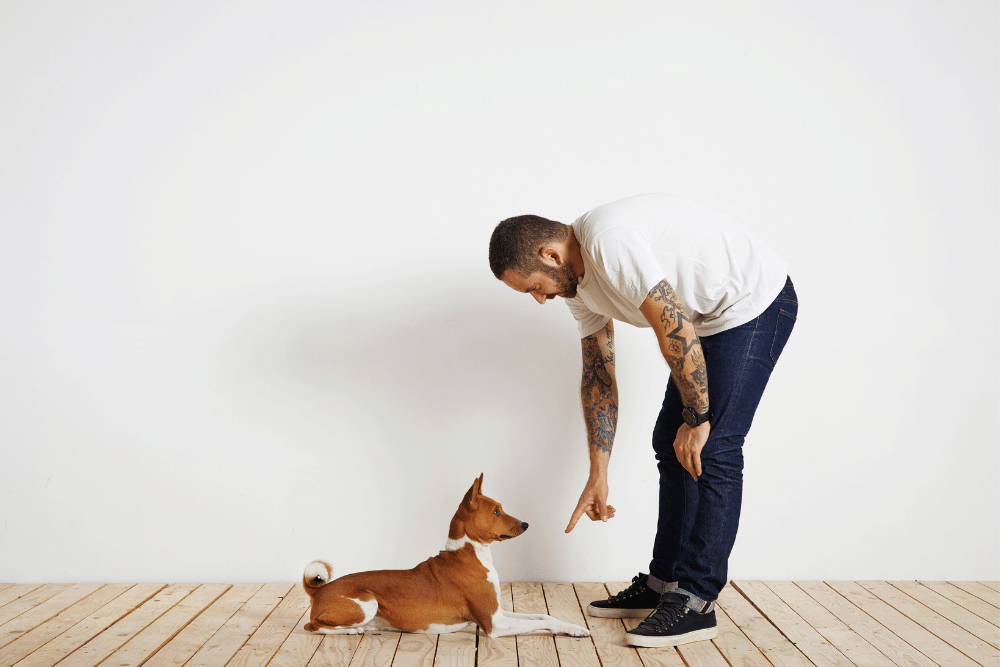
7. Stay.
This command means “remain in your current position until you are released.” Not always the easiest command for young, curious, energetic dogs!
This is important to begin training early and to continue practicing with incremental increases in time and distance.
8. Wait.
Unlike stay, wait cues a temporary stop in motion. Pausing at the curb before crossing the street and sitting and waiting before you open a door are good examples.
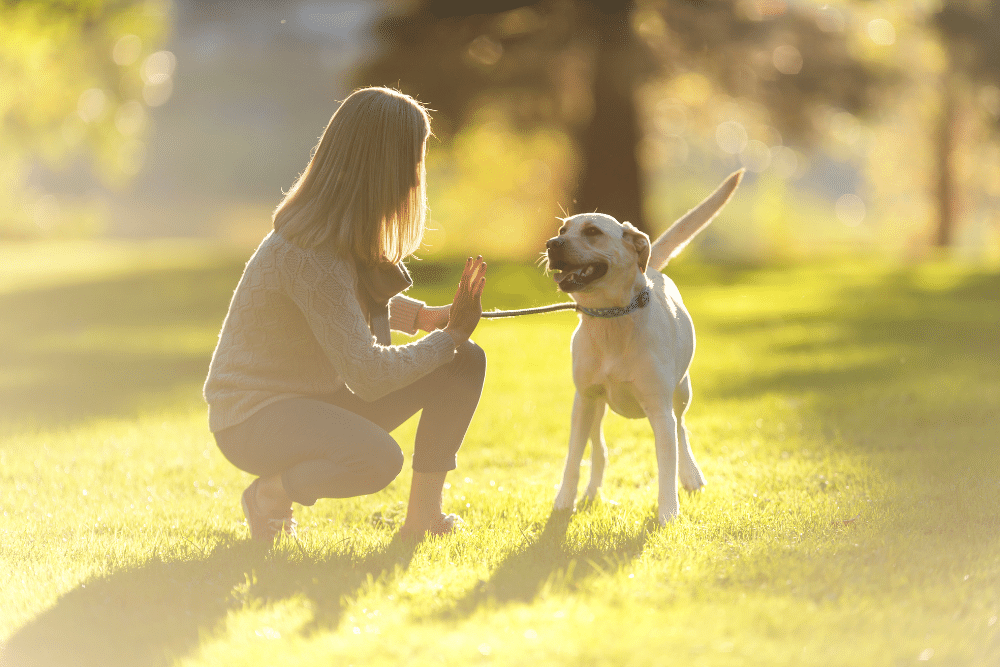
9. Off.
One of the most common mistakes people make when using dog training commands is confusing down with off. While down is about lying belly-down, off is a command to get “off” (furniture, people) and back to all four (paws)-on-the-floor.
10. Leave it.
You’re one step ahead of your dog, and you see her heading for that hamburger wrapper on the ground. Leave it is your anticipatory cue to tell her, “Don’t even think about it.”
11. Drop it.
OK, so you weren’t watching so closely, and Fluffy-Nutter snagged that burger wrapper before you could stop her with leave it.
Or perhaps she selectively didn’t hear you.
Drop it, easily taught by offering a high-value training treat in exchange for what’s in her mouth, is her cue to hand over the goods.
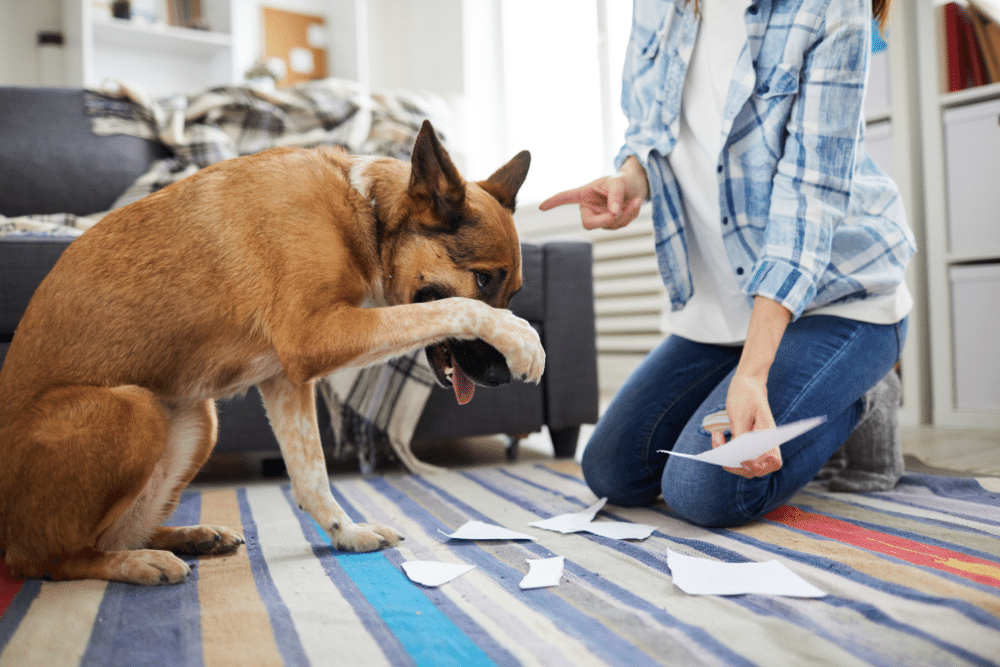
12. No.
The no command is important to teach early to keep your dog from engaging in unwanted behavior – lunging at people, counter-surfing, etc.
Sometimes a simple “eh-eh” is sufficient to redirect an impending no-no. But no? No means no!
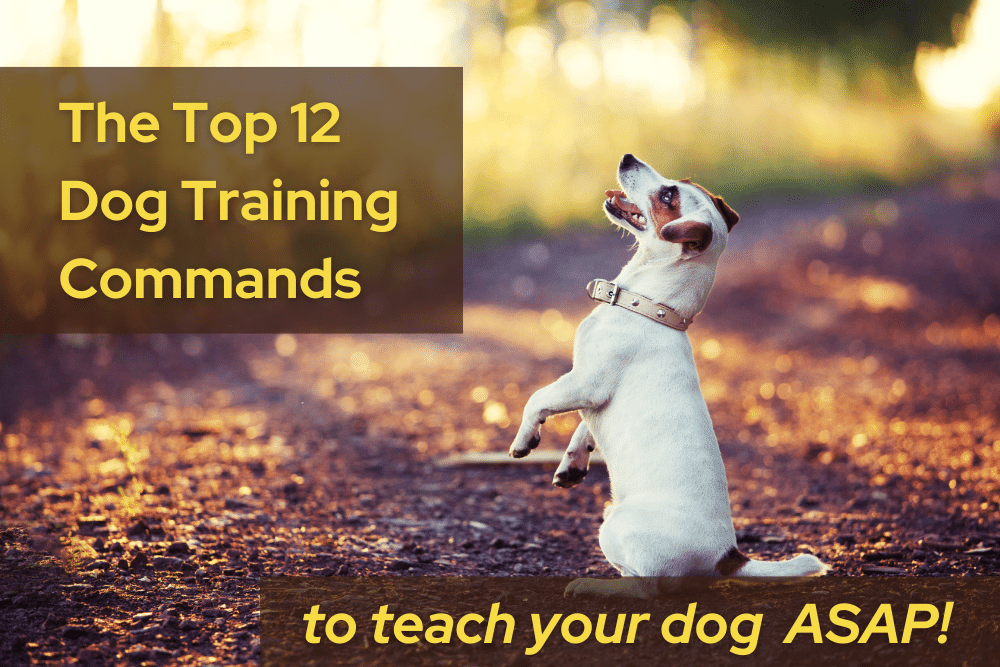
So you’ve got a dozen basic dog training commands to start you off.
And, unglamorous as they all are, they lay the groundwork for all future training endeavors. In fact, if you’ve got a puppy, check out our week-by-week puppy training schedule to help keep you both on track and measure progress.
Most importantly, practicing and perfecting these cues with your pup, always with positive reinforcement, will deepen your bond.
And that bond makes everything else possible…and fun.

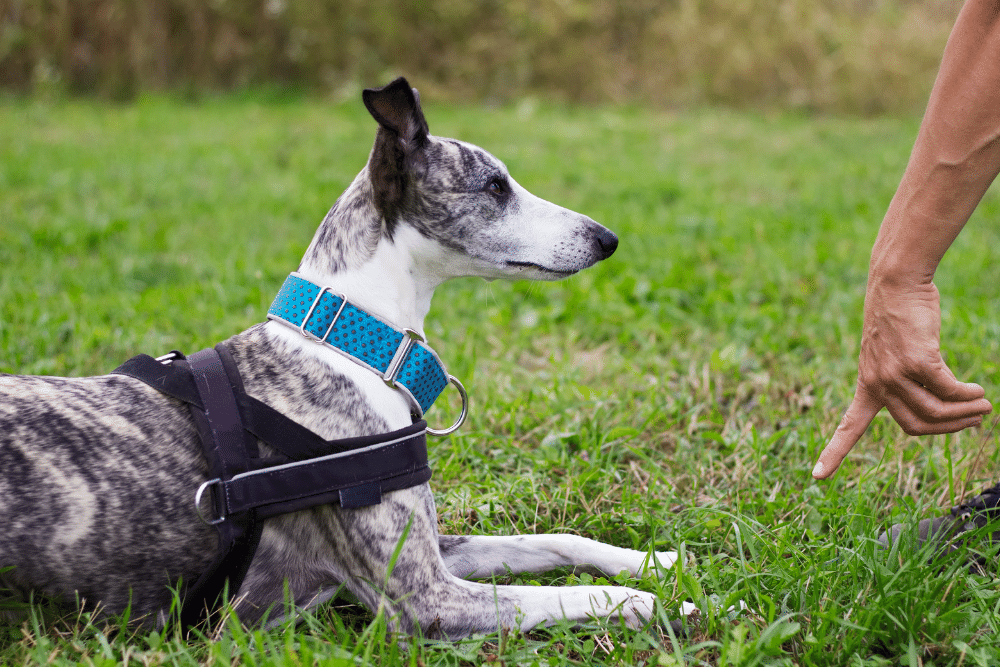







1 thought on “Top 12 Dog Training Commands For Basic Obedience”
Its such as you learn my mind! You appear to know a lot approximately this,
like you wrote the e book in it or something. I believe that you just can do with a few
percent to power the message house a bit, however other
than that, this is magnificent blog. A great read.
I’ll definitely be back.